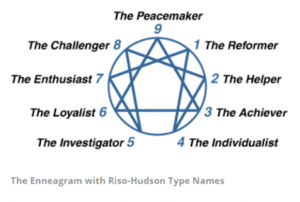If your social feed is anything like mine, then it waxes and wanes with trends constantly. One trend I’ve been seeing is the Enneagram — which, at is core, is a personality test.
Some popular agriculture and Enneagram memes that I’ve seen lately are the Enneagram types as cattle breeds from Girls Eat Beef Too and Enneagram types reacting to the cows being out from Hungry Canyon.
While these memes are funny and entertaining, if you don’t understand the Enneagram, they are confusing. So why should you learn about this trendy personality test? Because it can help you become self-aware and get out of your way — and it helps you better understand others. Agriculture is not only a stressful but an isolating field. The Enneagram provides us with a way to better connect with, understand, and appreciate people. This could make us better farmers and ranchers, but overall it would make us better people.
Each person has one type, commonly described as a numeric from 1 to 9. And no type is better than the other. Each type has unique struggles and successes. The characteristics of these nine types are not all-encompassing or all-inclusive, you will see parts of yourself in several types.

The types and their descriptions, according to the Enneagram Institute, are:
- The Reformer: The Rational, Idealistic Type: Principled, Purposeful, Self-Controlled, and Perfectionistic
- The Helper: The Caring, Interpersonal Type: Demonstrative, Generous, People-Pleasing, and Possessive
- The Achiever: The Success-Oriented, Pragmatic Type: Adaptive, Excelling, Driven, and Image-Conscious
- The Individualist: The Sensitive, Withdrawn Type: Expressive, Dramatic, Self-Absorbed, and Temperamental
- The Investigator: The Intense, Cerebral Type: Perceptive, Innovative, Secretive, and Isolated
- The Loyalist: The Committed, Security-Oriented Type: Engaging, Responsible, Anxious, and Suspicious
- The Enthusiast: The Busy, Fun-Loving Type: Spontaneous, Versatile, Distractible, and Scattered
- The Challenger: The Powerful, Dominating Type: Self-Confident, Decisive, Willful, and Confrontational
- The Peacemaker: The Easygoing, Self-Effacing Type: Receptive, Reassuring, Agreeable, and Complacent
Seeing these clusters of words usually will not provide you with the correct type. It is very easy to mistype yourself and others. Mistyping is both common and dangerous because the Enneagram is different than other personality tests. Where others look at behaviors, the Enneagram focuses on motives and helps you identify core fears, desires, and pain points. It’s not I do this therefore I am XYZ, it is I know I am XYZ therefore I’m more likely to do this.
Reading detailed descriptions either online or in books about each type is the best way to identify your type, along with assessments, both free and paid. A common occurrence when reading about the types is to have items from numerous types resonate with you. However, there is usually one that resonates the most. When I started reading the description of my type I felt angry, like someone had looked inside my soul and listed out for the world everything I tried so hard to hide.
A unique aspect of the Enneagram is that people are fluid, while they will more than likely stay one type throughout their life, they can move along the diagram in times of growth, stress, or based on their level of health regarding a circumstance. The three levels of development that apply to all types are healthy, average, and unhealthy. The level of development can change over time and circumstance.
Along those same lines, the Enneagram also explains and showcases how people will react in times of stress or growth. Those actions are directly related to your type and are called direction of integration and direction of disintegration. A 3 would show more characteristics of a 6 when in times of growth and characteristics of a 9 when in times of stress.
This may seem like arbitrary numbers or a bunch of confusing nonsense, but people and companies all over are seeing the benefit of building stronger interpersonal relationships through the Enneagram. It is similar to the adage, “Don’t judge someone until you’ve walked a mile in their shoes.” The Enneagram is like a walking stick on that journey. Just one tool to help build and strengthen relationships.
Understanding why you are reacting a certain way in a given circumstance can be beneficial for mental health, and having that information about your family, friends, and coworkers can help an operation run smoothly and address conflict.
With a difficult and challenging industry, any opportunity to understand those on our operations or in our corporations better should be one we utilize. There is enough that divides us in this industry, so why not find some common ground? Whether that be in laughing at trendy memes or having a better understanding of why someone reacted a certain way. We in agriculture are scientifically intelligent — let’s go ahead and further build our emotional intelligence, too.
Michelle Bufkin is a freelance communication specialist whose goal is to help producers bridge the farm-to-plate knowledge gap that exists with consumers today. She uses her full-time position as the Membership and Communication Director at the Arkansas Cattlemen’s Association to interact with producers and work on building that connection.



